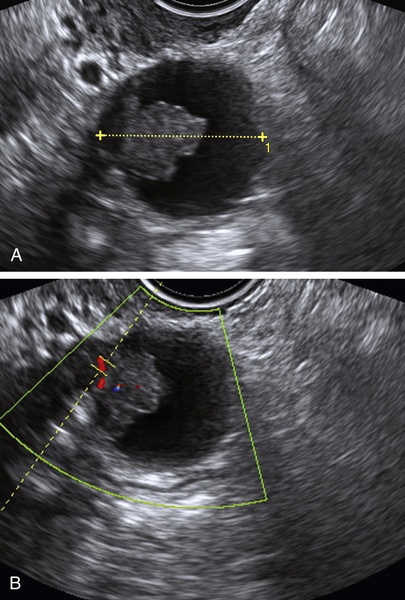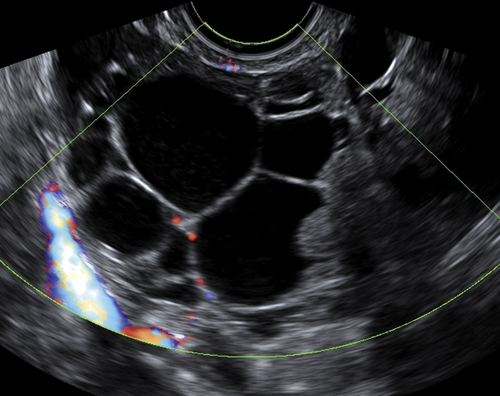Cystadenofibroma
Synonyms/Description
Benign ovarian tumor that arises from surface epithelium and underlying cortical connective tissue of the ovary.
Etiology
These are rare benign ovarian tumors representing less than 2% of benign ovarian neoplasms. Originally thought to be fibrous variants of cystadenomas (the most common benign epithelial ovarian neoplasms), these tumors actually originate from the surface epithelium as well as the underlying cortical connective tissue of the ovary.
Ultrasound Findings
Cystadenofibromas are often complex in their sonographic appearance. They are at least partly if not predominantly cystic and may contain septations, solid areas, and nodularity. The most common appearance (69% in a series of 58 cases) is a unilocular cyst with papillations that project into the lumen but do not demonstrate blood flow using color Doppler. The appearance, however, can be quite variable, and can mimic the appearance of a malignancy, with thick septations and blood flow in the solid areas. Occasionally, ovarian cystadenofibromas may be borderline tumors (5 in a series of 47 tumors).
Differential Diagnosis
In some patients, the tumor has an appearance indistinguishable from a malignancy, with solid areas and septations containing color flow on Doppler evaluation; these are usually removed. The majority of cystadenofibromas are unilocular with solid areas devoid of blood flow. The main differential diagnosis includes an endometrioma or a cystadenoma (mucinous or serous).
Clinical Aspects and Recommendations
Like most adnexal masses, such tumors are usually discovered at the time of bimanual examination or incidentally during pelvic imaging. Less commonly they can be associated with pelvic pain, which may be a result of enlargement of the mass. Unlike fibroadenomas, which are primarily solid tumors, the epithelial portion of cystadenofibromas always has a cystic component. The presence of papillary projections (solid mural nodules) emanating from the cyst wall may raise concerns about potential malignancy. However, emerging clinical evidence suggests that when cystadenofibromas present as a unilocular cystic structure with a small avascular mural nodule, conservative management may be a more appropriate approach.










